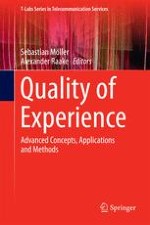2014 | OriginalPaper | Buchkapitel
3. Quality of Experience Versus User Experience
verfasst von : Ina Wechsung, Katrien De Moor
Erschienen in: Quality of Experience
Aktivieren Sie unsere intelligente Suche, um passende Fachinhalte oder Patente zu finden.
Wählen Sie Textabschnitte aus um mit Künstlicher Intelligenz passenden Patente zu finden. powered by
Markieren Sie Textabschnitte, um KI-gestützt weitere passende Inhalte zu finden. powered by
